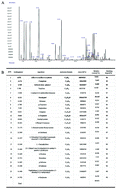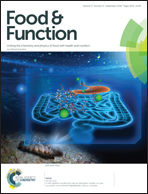Volatile oil from alpinia officinarum promotes lung cancer regression in vitro and in vivo
Abstract
The anti-lung cancer activity of volatile oil from Alpinia officinarum (VOAO) and the underlying mechanism has not been studied. Herein, VOAO was extracted by steam distillation and its components were identified by GC-MS analysis. Cells viability was measured by an MTT assay and the cell survival capacity was tested via a colony formation assay. Apoptosis cells were detected using the Annexin V-FITC/PI method. Hoechst 33342 cell unclear staining was employed to evaluate the nuclear morphology change. The mitochondrial membrane potential was detected by a JC-1 staining assay. Bcl-2, Mcl-1 and cleaved caspase-3 proteins were quantified by immune blotting. Furthermore, VOAO anti-cancer activity was evaluated on an A549 cell xenograft nude mice model. Our results have revealed that VOAO could inhibit the cell viability of lung carcinoma cells and the colony formation capacity. VOAO downregulates Bcl-2 and Mcl-1 and triggers dysfunction of the mitochondrial membrane potential. VOAO further activates caspase-3 cleavage and induces lung cancer cells apoptosis. In addition, VOAO administration significantly suppresses lung cancer growth in xenograft mice without obvious hepatotoxicity. We conclude that VOAO could be an effective, low cytotoxicity natural component for treatment of lung carcinoma.



 Please wait while we load your content...
Please wait while we load your content...